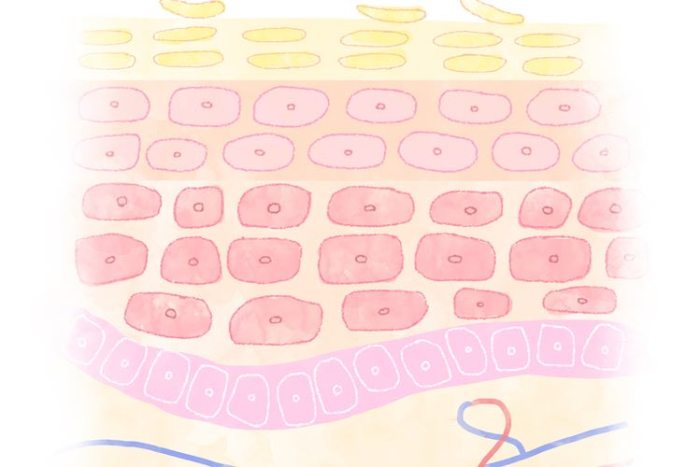The Biology of Skin Color Worksheet delves into the captivating realm of human pigmentation, exploring the intricate interplay of genetics, environment, and societal implications. This comprehensive resource unravels the fascinating science behind skin color, offering a nuanced understanding of its biological, social, and cultural significance.
Within this meticulously crafted worksheet, you will embark on a journey to decipher the role of melanin, unravel the genetic tapestry that weaves our diverse skin tones, and uncover the environmental factors that shape our complexion. Join us as we delve into the complex relationship between skin color and health, uncovering the intricate connections to vitamin D synthesis and disease susceptibility.
Moreover, we will navigate the social and psychological landscapes associated with skin color, examining its profound impact on individual experiences and societal norms.
1. Biology of Skin Color
Skin color is a complex trait that is determined by a combination of genetic and environmental factors. The primary determinant of skin color is melanin, a pigment that is produced by cells in the skin called melanocytes. Melanin absorbs and scatters light, and the amount and type of melanin in the skin determines the color of the skin.
Genetic Basis of Skin Color Variation, The biology of skin color worksheet
The genetic basis of skin color variation is complex and involves multiple genes. The most important gene involved in skin color is the melanocortin-1 receptor (MC1R) gene. MC1R is a receptor for melanocyte-stimulating hormone (MSH), which is a hormone that stimulates the production of melanin.
Variations in the MC1R gene can lead to variations in skin color, with darker skin colors being associated with mutations that increase the activity of MC1R.
Environmental Factors that Influence Skin Color
In addition to genetic factors, environmental factors can also influence skin color. The most important environmental factor that influences skin color is sunlight. Exposure to sunlight stimulates the production of melanin, which can lead to darkening of the skin. Other environmental factors that can influence skin color include diet, smoking, and certain medications.
2. Methods for Measuring Skin Color

There are a number of different methods that can be used to measure skin color. The most common method is the Fitzpatrick scale, which is a visual scale that classifies skin color into six categories from very fair to very dark.
Advantages and Disadvantages of Different Methods
Each method of measuring skin color has its own advantages and disadvantages. The Fitzpatrick scale is a simple and easy-to-use method, but it is not as precise as other methods. More precise methods, such as spectrophotometry, can measure skin color more accurately, but they are more expensive and time-consuming to use.
Importance of Standardized Methods
It is important to use standardized methods for measuring skin color in order to ensure that the results are consistent and comparable. This is especially important in research studies, where it is necessary to be able to compare skin color measurements from different studies.
3. Skin Color and Health: The Biology Of Skin Color Worksheet

Skin color can have a number of health implications. One of the most important health implications of skin color is the relationship between skin color and vitamin D synthesis. Vitamin D is a nutrient that is essential for bone health, and it is synthesized in the skin when exposed to sunlight.
Darker skin colors can reduce the amount of vitamin D that is synthesized in the skin, which can lead to vitamin D deficiency.
Skin Color and Risk of Certain Diseases
Skin color can also affect the risk of certain diseases. For example, people with darker skin colors are at a higher risk of developing certain types of skin cancer, such as melanoma. Additionally, people with darker skin colors are at a lower risk of developing certain types of heart disease.
Social and Psychological Implications of Skin Color
Skin color can also have a number of social and psychological implications. In many societies, people with darker skin colors are discriminated against. This discrimination can lead to a number of negative health outcomes, such as depression, anxiety, and low self-esteem.
4. Skin Color and Society

Skin color has a long and complex history of discrimination. In many societies, people with darker skin colors have been subjected to slavery, colonialism, and other forms of oppression. This history of discrimination has had a profound impact on the way that people of color are treated in society today.
Current Social and Political Issues Related to Skin Color
Today, there are a number of social and political issues related to skin color. These issues include racial profiling, police brutality, and mass incarceration. These issues disproportionately affect people of color, and they have a negative impact on their health and well-being.
Ways in Which Skin Color Can Affect an Individual’s Life Experiences
Skin color can affect an individual’s life experiences in a number of ways. For example, people with darker skin colors are more likely to be stopped by the police, they are more likely to be convicted of crimes, and they are more likely to be sentenced to longer prison terms.
Additionally, people with darker skin colors are more likely to experience discrimination in housing, employment, and education.
FAQ Explained
What is the primary determinant of skin color?
Melanin, a pigment produced by specialized cells in the skin, plays a crucial role in determining skin color.
How does genetics influence skin color variation?
Genes inherited from both parents interact to determine the amount and type of melanin produced, resulting in the diverse range of skin tones observed in human populations.
Can environmental factors affect skin color?
Exposure to sunlight, UV radiation, and certain chemicals can influence melanin production, leading to changes in skin color.